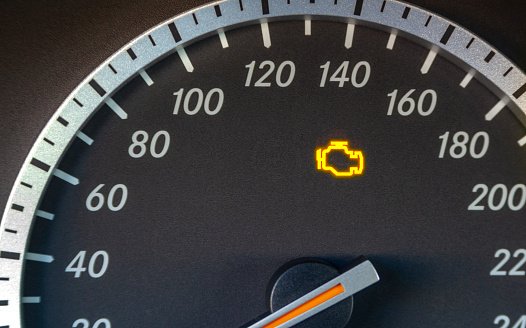The speed sensor is a critical component of your vehicle’s engine management system as it helps to monitor and manage the rotational speed of its various connected parts. Without this critical element, performance could suffer drastically and, in some cases, compromise safety.
However, for many vehicle owners, understanding when the speed sensor might be faulty can be difficult. In this article, we will outline the signs of a faulty speed sensor so you can ensure your car runs smoothly and efficiently for years to come.
What are the signs of a faulty speed sensor?
The first and most common sign of a faulty speed sensor is an error code on your vehicle’s dashboard. This error code will usually be accompanied by a warning light that indicates that the speed sensor has failed. If you see this warning, you should immediately get your car checked by a qualified mechanic or technician. Take a look at the up to date information available at https://obdstation.com/p0500-obd2-code/ to learn more.
Another sign of a faulty speed sensor is an engine hesitation or stalling when you hit the accelerator. It can result from the speed sensor not registering the correct RPMs, causing your car not to react correctly when you try to accelerate. In cases like this, it is crucial to get your vehicle checked as soon as possible to resolve any potential problems quickly and safely.
Finally, if your vehicle is having difficulty shifting gears or the transmission seems to slip, it could also be a sign that the speed sensor is not working correctly. When this happens, the car’s computer will not be able to accurately read how fast the engine is going, which can cause it to struggle when trying to shift gears. It is another issue that should be addressed immediately so you can drive safely and without further issues.
What are the symptoms of a faulty speed sensor?
Aside from the engine warning light, other symptoms can indicate a faulty speed sensor. One of the most obvious is if you notice a decrease in your car’s overall performance. It could be in terms of acceleration or fuel economy, as both depend on the speed sensor properly functioning within your vehicle.
Another symptom is if your car’s speedometer isn’t working correctly, which could mean that the speed sensor isn’t accurately transmitting data to the computer. It can lead to misreading of the RPMs, resulting in poor performance, or even cause engine damage due to over-revving.
Finally, if you notice a strange squeaking or grinding noise coming from your engine when you accelerate, this could indicate that the speed sensor is not functioning correctly. This noise usually means that the system is trying to switch gears but can’t due to an issue with the speed sensor.
What are the consequences of a faulty speed sensor?
If your speed sensor is not working correctly, it can adversely affect your car’s performance. Firstly, incorrect readings from the sensor can cause problems with fuel economy as it will not be able to monitor the rotational speed accurately and, therefore, won’t know when to switch off or reduce the amount of fuel being used.
Another consequence is that it can cause engine hesitation and stalling, as the computer won’t be able to accurately calculate when it needs to shift gears or change fuel usage. It can lead to a lack of acceleration, poor performance, and even potential damage to your engine.
Finally, a faulty speed sensor can also impact your car’s handling. If the system cannot accurately read your vehicle’s speed, it could cause problems with braking and cornering, which can be dangerous if you are traveling at high speeds.
How can I check for a faulty speed sensor?
The best way to check for a faulty speed sensor is by using a diagnostic tool. It can be done at any automotive store or even at home if you have access to the right equipment. The diagnostic tool will be able to detect any errors with your speed sensor and provide you with more information, such as whether it needs to be replaced or just repaired.
You can also check the wiring and connectors of your speed sensor to ensure that they are all in good condition, as any worn or broken wires could be causing problems. If you need more confidence in doing this yourself, it’s best to leave it up to a trained technician who can identify any problems quickly and accurately.
Finally, it’s vital to get your vehicle checked as soon as possible to resolve any potential problems quickly and safely. If you suspect a problem with your speed sensor, don’t hesitate to take it to the garage or have a diagnostic test performed. Doing this could save you time and money in the long run and help prevent further damage to your car.
In conclusion
A faulty speed sensor can have severe consequences for your vehicle’s performance and can even lead to potential engine damage if left untreated. It’s essential to be aware of the signs that indicate a problem with your speed sensor so that you can take action if needed. By using a diagnostic tool or having your car checked by a trained technician, you can diagnose and fix any issues quickly and ensure that your vehicle is performing at its best.

